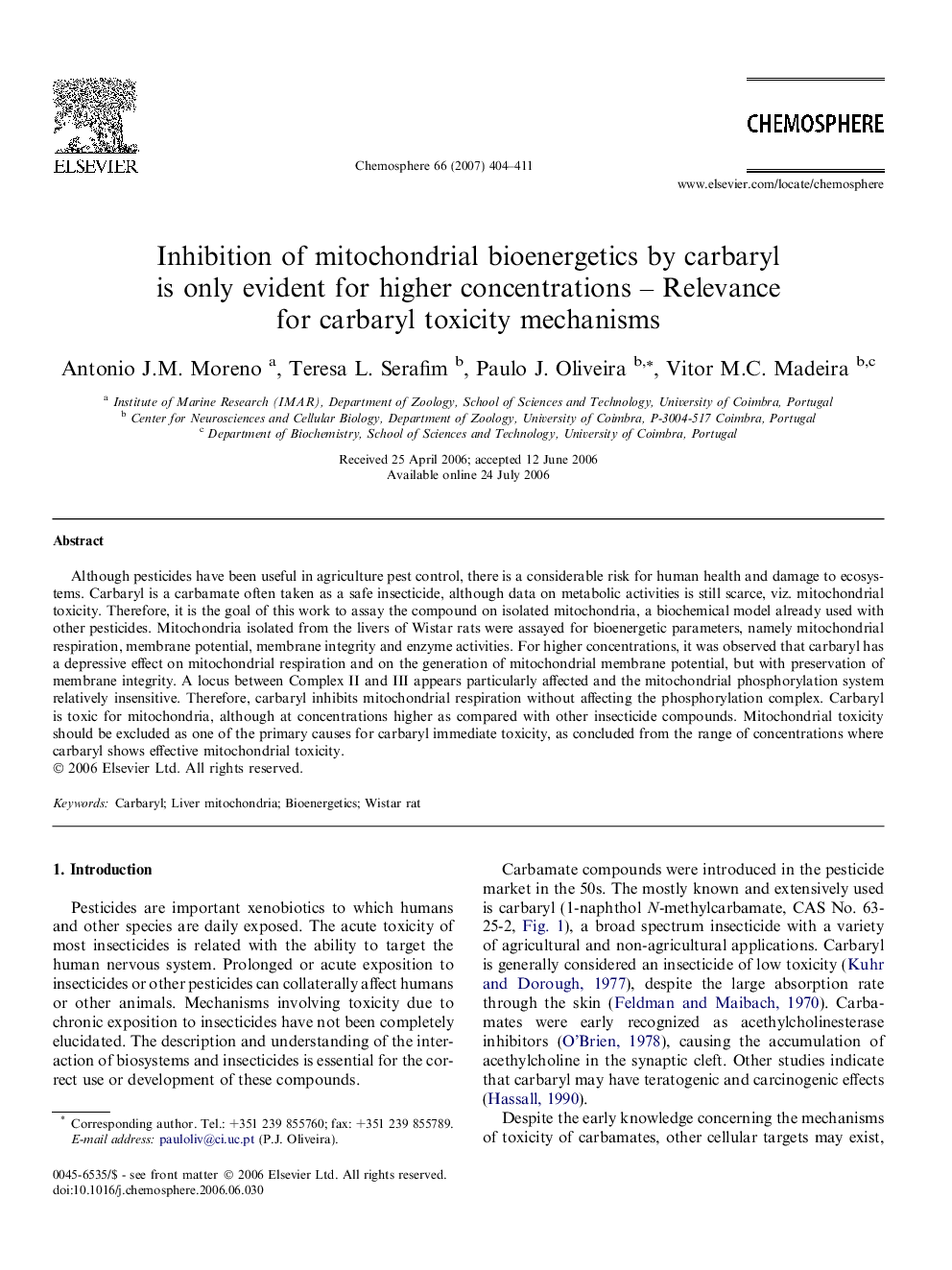| Article ID | Journal | Published Year | Pages | File Type |
|---|---|---|---|---|
| 4416379 | Chemosphere | 2007 | 8 Pages |
Although pesticides have been useful in agriculture pest control, there is a considerable risk for human health and damage to ecosystems. Carbaryl is a carbamate often taken as a safe insecticide, although data on metabolic activities is still scarce, viz. mitochondrial toxicity. Therefore, it is the goal of this work to assay the compound on isolated mitochondria, a biochemical model already used with other pesticides. Mitochondria isolated from the livers of Wistar rats were assayed for bioenergetic parameters, namely mitochondrial respiration, membrane potential, membrane integrity and enzyme activities. For higher concentrations, it was observed that carbaryl has a depressive effect on mitochondrial respiration and on the generation of mitochondrial membrane potential, but with preservation of membrane integrity. A locus between Complex II and III appears particularly affected and the mitochondrial phosphorylation system relatively insensitive. Therefore, carbaryl inhibits mitochondrial respiration without affecting the phosphorylation complex. Carbaryl is toxic for mitochondria, although at concentrations higher as compared with other insecticide compounds. Mitochondrial toxicity should be excluded as one of the primary causes for carbaryl immediate toxicity, as concluded from the range of concentrations where carbaryl shows effective mitochondrial toxicity.
